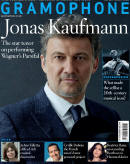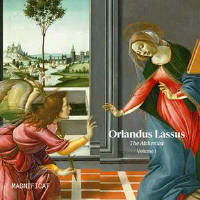Texte paru dans: / Appeared in: |
|
 |
Outil de traduction |
|
For lovers of 16th-century music there can be few nuts harder to crack than the Magnificat settings of Lassus. There are over a hundred of them, almost all alternatim – that is, with the odd-numbered verses sung to monophonic chant: polyphony is only in the six even-numbered verses, each of roughly the same length, so lasting between 60 and 90 seconds each. Within those limitations there is not much scope for even the most inventive composer to spread his wings. There was a time when scholars and critics thought that the 16th-century Mass cycles were impenetrable, all setting the same text. But, partly as a result of the burst of excellent recordings on CD, we now understand that there is in fact infinite variety within those Masses. Nobody seems to have penetrated that far yet with the Magnificat settings.
So it was a step of some boldness for Philip Cave and Linn to plan what looks like a six-CD set of these Magnificat settings, each preceded by its model. For the first two CDs their focus is on settings based on Italian madrigals, each time performing the madrigal before they perform the related Magnificat. Here we have 14 such pairs, theoretically devoting one CD to madrigals by non-Italian composers and the other to Italians (though that doesn’t quite work, because Rore appears twice on each CD and Lassus himself is on the Italian CD, though we know he was born in Mons).
It cannot have been easy. Cave starts with the chant sections, for each Magnificat sounding different, with different voices singing, with slight changes of tempo and colour. And they milk the polyphony for all its worth, giving as much stress on the difference between settings in four, five and six voices, and giving even more stress on the distressingly few cases where Lassus tries a smaller group. On the other hand, they firmly resist imposing wilful changes of tempo or dynamics. That is to say that they keep everything on an even keel. And the evidence of how hard it was emerges clearly from the erudite booklet note of John Milsom, who probably knows as much about this repertory as anybody but has far more to say about the original madrigals than about what Lassus did with his material.
But the singing is glorious throughout: these are all very experienced musicians with marvellous voices and a deep understanding of the repertory; and Philip Cave guides them with a thoroughly experienced and musically thoughtful hand. The texts and translations come with footnotes alerting us to differences between the printed madrigal texts and the original prints of the poets concerned. So what we have here is an archive of the very best sort: done with the utmost seriousness in the hope that some listener in the future will find out about the rich variety of this music. |
|




